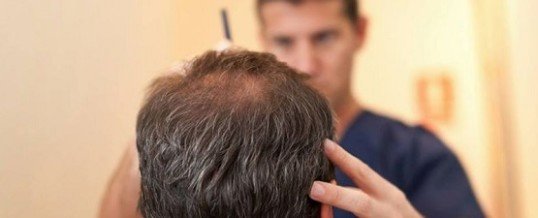What Is Robotic Hair Transplantation?
Robotic hair transplantation is often lauded as the “next step” in the world of hair restoration procedures. This approach to hair transplantation incorporates robotic tools to help or assist a hair transplant surgeon perform a hair transplant procedure. With robotic hair transplantation, devices utilize technology and artificial intelligence programs to map out the hairs on the scalp, identify potential donor hairs, harvest the required amount of hairs, and transplant them to the desired area.
Marketing Claims of Robotic Hair Transplant
Some of the most popular claims you may hear about robotic hair-transplant surgery are the speed and precision of the systems. The cameras, imaging, and AI programs are said to serve to make the process faster, more precise, and less intensive in order to provide more consistent results and decrease recovery time. However, when robotic hair transplantation is compared to a highly skilled hair transplant surgeon, this is not the truth…
The Truth of Robotic Hair Transplantation
Robotic hair transplantation devices are marketed all over the country to all doctors regardless of experience. Initially, these devices were marketed toward skilled and established hair transplant surgeons.
When these surgeons did not see any benefits of using the robot and did not purchase the device, marketing efforts were turned to plastic surgeons and dermatologists, many with no training or experience in hair transplantation. These doctors are convinced to purchase the device so they can add an additional revenue stream to their current list of services.
They are taught how to operate the device and its software, and then they begin selling hair transplants. This has caused a drastic increase in the number of doctors all over the country who now perform hair transplantation, many with no real hair transplant training.
Even worse, there is another company that sells an FUE device that a doctor does not even need to know how to use. The doctor sells the procedure and the company sends a group of technicians to the doctor’s office and the technicians perform the entire procedure without the doctor ever touching the patient.
Robotic Hair Transplantation vs. Manual Hair Transplantation
When compared to an experienced hair transplant surgeon, the robotic device lacks both density and precision. A skilled and experienced hair transplant surgeon is able to use instrumentation smaller than what the robot is capable of using. The extraction methods with the robot require the use of larger punches to remove the required hairs. The robotic method:
- Prevents smaller punches from being utilized which leads to less density.
- Creates larger scars. Bigger punches create larger incisions which lead to larger scars in the donor area.
- Leads to increased thinning of the donor area of hair due to increased transection rates from the use of larger punches.
- Sometimes cannot see the hair well and is best suited for dark straight hair on light skin
It’s also important to note that bad results from robotic hair transplantation cannot always be fixed. Risking the permanent appearance of your hairline and scalp when the goal was to restore your hair is counterintuitive.
The Importance of Choosing the Right Surgeon
If you want good results that look as natural as possible, the most important thing you need to do is to find a skilled and experienced hair transplant surgeon–there is no substitute. While advertisements and other forms of marketing might make it seem like these robotic systems can do more than what a skilled surgeon can do or that the only way to get good results is through robotic hair transplantation, this is not the case.
A surgeon who understands the ins and outs of hair transplantation can utilize smaller incisions and can recognize lighter hairs and work with them. Most importantly, they can make the subtle but crucial changes and adjustments needed to produce natural-looking results that satisfy the needs of the patient.
Randall R.
“Losing my hair, I felt like I was just not me anymore. I had a lengthy conversation with Gregg Kreyling and decided to go ahead with the transplant. I would like to thank Gregg and his team for helping me restore the confidence in me that was lost. Again, Thank you! Highly recommended for those who are seeking a new restored self you.”
READ MORE REVIEWS
The Bottom Line
If you are considering undergoing hair-transplant surgery, your first priority should be finding a surgeon with proven knowledge and ability. Don’t let yourself be dazzled and enticed by phrases like “cutting edge” and “state of the art,” and don’t leave your results in the hands of someone more interested in making a profit than providing quality care and results. Look beyond the technology, and look for a doctor’s credentials in hair transplant surgery which is the true indicator of you having a successful, world-class result.
How Much Does Robotic and Neograft FUE Systems Cost?
The total cost of Robotic and Neograft FUE Systems surgery is determined based on factors like your medical examinations, surgeon’s fee, hospital charges, post-surgery garments, and anesthesia. The exact techniques used will also impact cost, as will the total time needed to perform the surgery.
Schedule a Consultation
Contact our office today to learn more about the pros and cons of robotic hair transplantation in St. Louis, or schedule a consultation with our hair-transplant educator, Gregg Kreyling. A consultation is a perfect time to discuss your concerns and to ask any questions you have about hair transplant methods. The team at St. Louis Hair Restoration strives to ensure that patients can make truly informed decisions about their treatment, and we look forward to helping you achieve your hair restoration goals.
Related Posts
How To Choose A Hair Transplant SurgeonA significant percentage of the population suffers from hair loss. Of those with hair loss, many would benefit from a hair transplant procedure. Exactly what the benefits are of undergoing a hair transplant procedure are unique to each…
Read More
Recent History Of Hair TransplantsOver the past few decades, hair transplant procedures have improved significantly. Not only has the technology involved in the hair transplant process improved, but the skill of the surgeons who perform the procedures and operate…
Read More
Types Of Hair Transplantation ProceduresThe decision to undergo a hair transplantation procedure is a big one. While it would not be considered major surgery, it is still technically considered a surgery—albeit a minimally invasive type of surgical procedure. Because of…
Read More
Related Links





